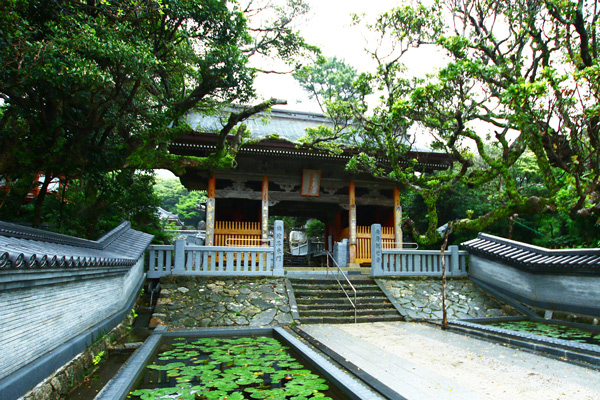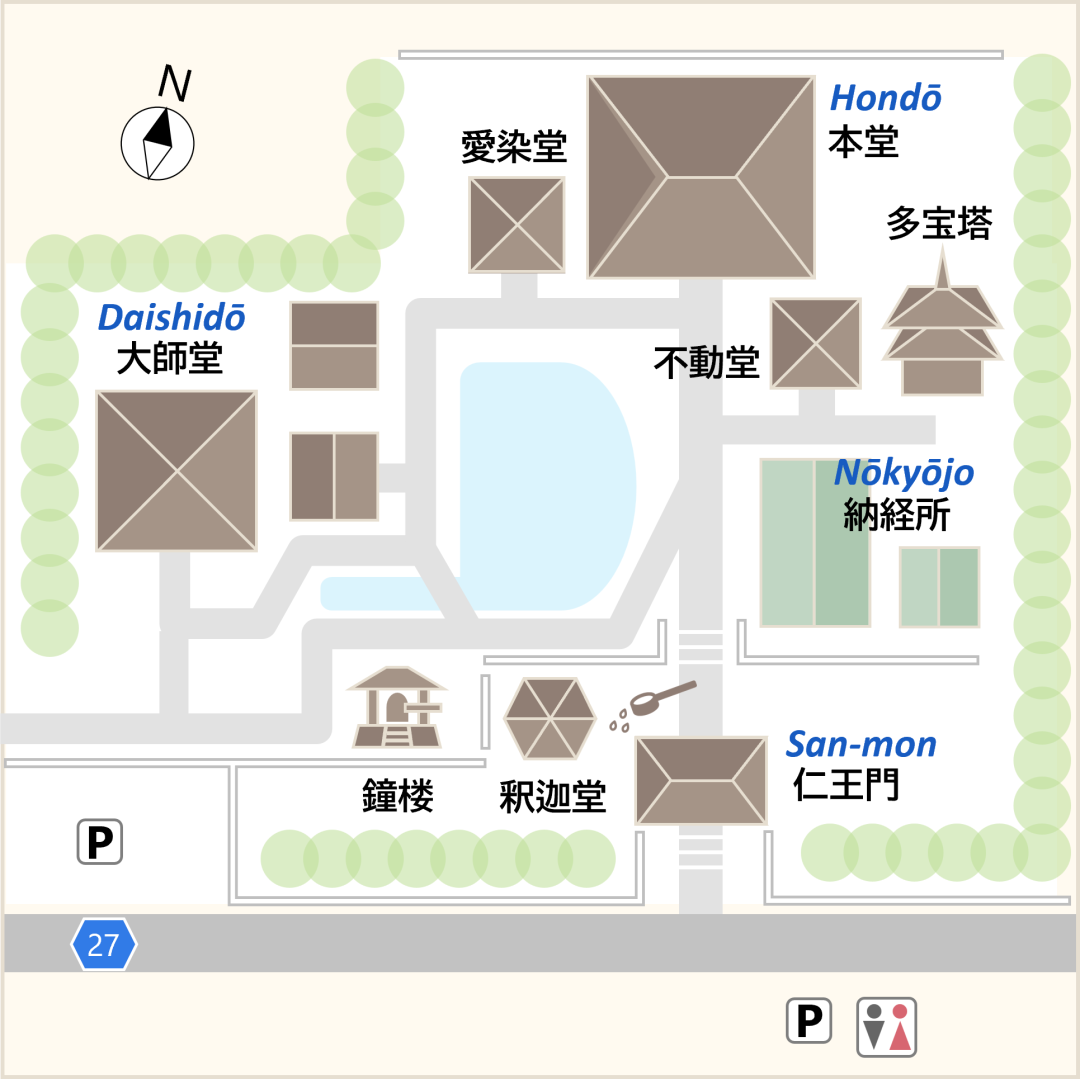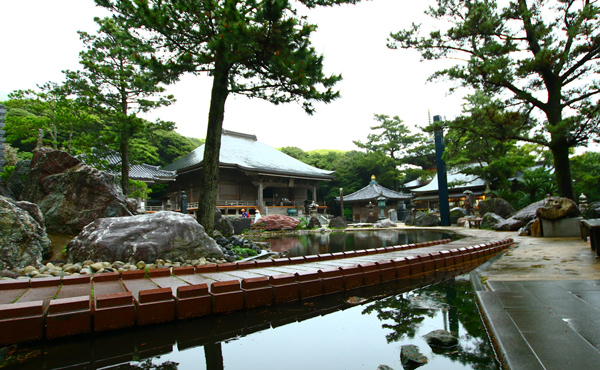The Shikoku Pilgrimage Temple Guide
Temple 38, Kongōfukuji

Precinct map

History of the temple
Kongōfukuji is located on a hillside overlooking Cape Ashizuri, a national park in the southernmost part of Shikoku. It has large precincts covering 120,000 square meters. Kobo Daishi was impressed by the Pacific Ocean at the tip of the cape and sensed the presence of Fudaraku, the Paradise of Kannon Bosatsu (Bodhisattva Who Hears the Sounds of the World). He told Emperor Saga (reigned 809-23) who gave him the imperial inscription "Fudaraku Tomon," and he founded the temple in 822, when he was 49 years old.
The harbor at Ashizuri is surrounded by a sea of dark green trees and a white lighthouse, with waves breaking against cliffs. The scene evokes the Paradise of Kannon, and the natural scene is overwhelming. The pilgrim's journey to get there is not easy. It is more than 80 kilometers from temple 37. It takes only about two hours by car, but on foot it takes about 30 hours or 4 days and 3 nights. It is the longest distance between Shikoku pilgrimage temples, and is truly a temple of training.
According to temple legend, Kobo Daishi carved and enshrined a statue of the Sanmen Senju Kannon Bosatsu (Three-faced Thousand-armed Bodhisattva Who Hears the Sounds of the World) and named the temple Kongōfukuji. A kongō (Sanscrit vajra) is a Buddhist ritual implement that symbolizes Vajrayana Buddhism. Kobo Daishi threw a kongō toward Japan when he prepared to return from Tang Dynasty China. Fuku comes from fukujukai muryo, a passage in the Lotus Sutra. The temple became the site of prayer for emperors and has been venerated by warriors as well. In particular, the Minamoto clan gave the temple extensive support. Minamoto no Mitsunaka built a pagoda for the temple and his son Yorimitsu contributed to the restoration of some of the buildings.
Beginning in the Sengoku period (1467-1590), the temple's fortunes flourished due to the popularity of the Fudaraku Tokaii; people rowed small boats out to sea, alone, to worship the everlasting pure land beyond the sea. The temple also received the support of the Ichijo clan and the Yamauchi domain lords.
The remains of the Seven Wonders of Ashizuri, which are related to Kobo Daishi, are scattered around the tip of the cape.
Highlights
Garden
Within the temple grounds, just past the Niomon Gate, is the Fudaraku Tomon, which was inscribed by Emperor Saga (reigned 809-823). This gate is said to be the closest to the world of Fudaraku where Kannon Bosatsu lives. There is a large pond in the precincts of the temple. It is a water mirror resembling a mandala, reflecting the various halls, the Tosa Goshikiishi stones, and statues of 108 Buddhas.
Shinnen-an
This is a pilgrim lodging in Tosashimizu City on the pilgrimage route to Kongofukuji. It was built by Shinnen during the Edo period (1603-1868).
Imperial inscription in Emperor Saga's calligraphy
A wooden plaque engraved with the words "Fudaraku Tomon"). Emperor Saga was one of the "Three Great Writers" of the early Heian period, along with Kobo Daishi and Tachibana no Hayanari

Annual Events
| February 15th of lunar calendar | Ashizuri Onehan Festival |
Details
Names: Sadasan, Fudarakuin, Kongōfukuji
Denomination: Shingon sect, Buzan school
Principal Image: Sanmen Senju Kannon Bosatsu
Founder: Kobo Daishi
Founded: 822
Access
Address: 214-1, Ashizurimisaki, Tosashimizu City, Kochi 787-0315
Phone: 088-088-0038
Parking: 40 cars and 5 microbuses (free)
Lodging: Temporarily closed
Official website: None
